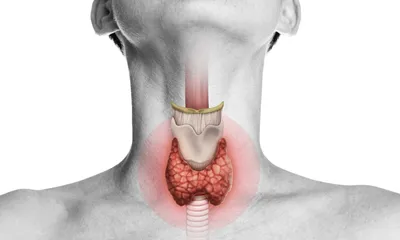Periodontitis Stages: The Result of Poor Oral Hygiene

Periodontitis, also known as gum disease, is a serious but preventable disease. The disease has different stages and, if left untreated, can result in tooth loss. Aside from tooth loss, periodontitis is associated with other health issues. Keep reading below to learn more about the different periodontitis stages, what adverse effects it can have on your health, and how to prevent and treat this disease altogether.
What is Periodontitis?
According to the European Federation of Periodontology (EFP), periodontitis is the inflammation of the gums and other periodontal structures. Periodontal bacteria are usually the reason for this inflammation.
According to the Centers for Disease Control and Prevention (CDC), periodontitis “is the leading cause of tooth loss in older adults.” However, tooth loss typically happens in the later stages of this treatable and preventable disease.
What are the Causes for Periodontitis?
According to EFP, periodontitis is the result of the proliferation of periodontal bacteria in the mouth owing to the right circumstances. Food debris and periodontal bacteria eventually build up to form plaque on the teeth. After a period of time, this undisturbed plaque hardens into tartar.
Plaque and tartar, when left undisturbed overtime, cause the gums to become inflamed. This inflammation can eventually damage the jaw bone and teeth if it goes untreated.
What are the different periodontitis stages?
Periodontitis does not occur overnight. It starts off mildly and gets worse overtime when left untreated. Learn more about the different stages below:
1. Gingivitis
While gingivitis is considered a separate disease from periodontitis, it’s a predecessor for the latter. According to the American Academy of Periodontology (AAP), gingivitis is the mildest amongst the different gum disease stages.
In this early stage, the gums are red and swollen. They will also bleed easily. There is typically no tooth loss, nor is there any pain or discomfort.
It’s important to note that gingivitis does not always lead to periodontitis. This is because it’s easily reversible with proper oral care such as daily flossing and brushing.
To reduce your changes even further, it’s also important to schedule regular cleanings and checkups with your dentist.
2. Early periodontitis
According to HealthLine, this is the earliest of the periodontitis stages. At this point, the gums start to recede and pull away from the teeth.
During this stage, small pockets between the gums and the teeth also begin to form. These pockets harbour bacteria, which can lead to further damage.
Just as with gingivitis, you’ll also experience bleeding while brushing or flossing your teeth.
3. Moderate periodontitis
In this stage, according to HealthLine, you’ll likely experience pain around the gums, in addition to bleeding and redness. Your teeth may also begin to loosen as they lose bone support due to a receding gum line.
4. Advanced periodontitis
In this final stage, according to Colgate, your gums and other supporting structures are irreversibly damaged. At this time, your teeth will be loose and you’ll likely experience tooth loss.
Alternative Health Consequences of Periodontitis
While periodontitis in itself is a serious disease, it may also be linked to other serious conditions and diseases. These are a couple of notable diseases that are associated with periodontitis:
1. Coronary heart disease
There have been many studies that suggest a link between periodontitis and coronary heart disease (CHD).
Periodontal disease is a potential source for chronic inflammation. As such, several studies have suggested that chronic inflammation may play a role in the development of CHD2.
One study by Humphrey and colleagues explored this idea and found that “periodontal disease is a risk factor or marker for CHD that is independent of traditional CHD risk factors.”
2. Rheumatoid Arthritis
In addition to CHD, research has suggested that periodontitis is linked to rheumatoid arthritis (RA) as well. Furthermore, studies have also proposed that periodontitis can be a marker for RA.
According to the Arthritis Foundation, researchers “have found a likeness in the joint and oral tissue, as well as in the inflammatory processes that affect them.”
In support of this, Mercado and colleagues also found that people who are in the moderate to severe periodontitis stages have a higher risk of suffering from RA. They also suggested that this can go both ways.
To add to this, Detert and colleagues also found some evidence for “the relationship between the presence of [periodontal disease] and the development of RA.”
While studies aren’t always conclusive, there is mounting evidence that periodontitis and RA do have an association. As such, researchers and dentists alike stress the importance of good oral care to reduce the risk of developing RA.
It’s also important to note that research indicates that those with RA may also be more susceptible to developing periodontitis. This is likely due to chronic inflammation. For these people, good oral care shouldn’t be taken lightly.
How to Prevent Periodontitis
As previously mentioned, periodontitis is a preventable disease. It all starts with knowing the risk factors and taking the right preventative measures to stop its development.
A few risk factors for periodontitis include:
1. Smoking
According to the CDC smoking weakens your immune system. This makes it harder for your body to fight off the infection in your gums.
Furthermore, a study by Van Dyke and Dave found that treatments for the disease are likely to be less successful for those who smoke as opposed to those who don’t.
2. Genetics
According to AAP, research also indicates that some people may be genetically inclined towards gum disease. As such, it’s important to speak with your doctor about your predisposition towards periodontitis.
3. Certain diseases
Studies have also indicated that diseases such as diabetes and RA could also increase a person’s risk for periodontitis 3 , 4.
4. Poor oral care
Infrequent brushing and flossing are obvious factors for developing periodontitis. Improper oral care leads to the buildup of plaque and, eventually, tartar. As a result, this causes inflammation and bleeding of the gums. This, of course, can progress into more severe periodontal disease stages.
In order to prevent the development of the disease and the progression of the periodontitis stages, follow these simple tips:
Brush and floss your teeth regularly to prevent the buildup of plaque and tartar under the gums.
Visit your dentist for regular checkups and cleaning.
Quit smoking.
Medications for Treating Periodontitis
If you are diagnosed with periodontitis, know that it doesn’t have to lead to tooth loss. There are many different treatments available, ranging from non-surgical to surgical.
If the disease isn’t in its advanced stages, you’ll likely undergo a special cleaning called “scaling and root planning”5. This will help remove plaque and tartar that’s built up overtime. Your dentist may also prescribe antibiotics such as tetracycline, minocycline, or doxycycline to reduce or eliminate periodontal bacteria6. These may be used as stand-alone treatments or in combination with surgical treatments.
Final Word
While periodontitis is a serious disease, it’s comforting to know that it is preventable and treatable.
Prevention starts with good oral care. However, it’s important to recognize other risk factors that could increase your chances of developing this disease.
With this in mind, it’s not just good oral care that’s the ticket to avoiding this disease. Overall health and wellness matter too! That’s why it’s important to take medications as prescribed and reach for healthier options.
If cost is preventing you from filling your prescriptions, see why this Canadian online pharmacy is the answer to soaring drug prices!


